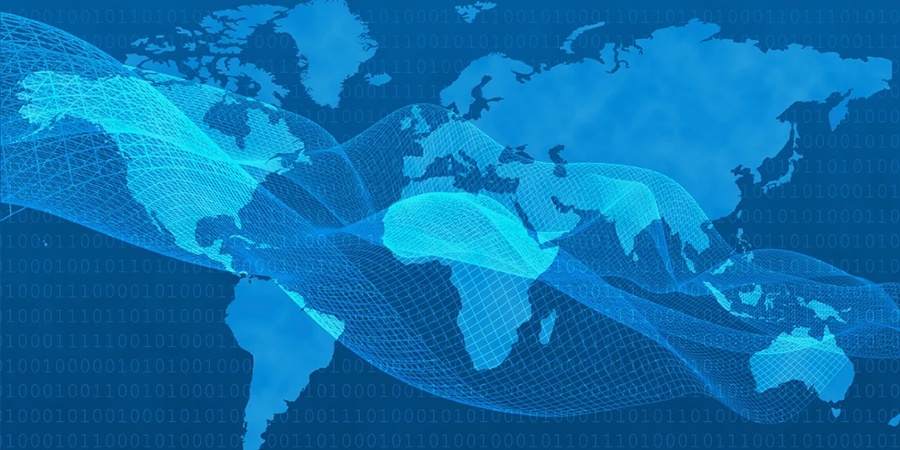Web 3.0 is still yet to come of age in a world where interconnectedness is more valued than before. The world became more dependent on the internet, especially during pandemic, and the latest numbers even suggest that over 12 trillion hours online will be spent online in 2022 alone.
Looking back to 1989 when Berners-Lee created the World Wide Web (WWW), he intended to build a functional, shareable, and scalable information system rooted in internet technology. More than three decades have passed and the web as we know it is bound to be upgraded.
Known as the upcoming third-generation of the internet, Web 3.0 is where websites and apps will be able to process information in an intelligent, trustless, open, and distributed way. Through technologies like machine learning (ML), artificial intelligence (AI), blockchain, and big data, among others, the next internet evolution would occur.
Going well beyond the social media, streaming, online shopping, and other digital interactions, Web 3.0 has the potential to provide users with far greater utility and more immersive experiences. As the next major era in computing, IT, and business leaders, Web 3.0 combines the community-governed approach of Web 1.0 and the high-engagement nature of Web 2.0.
This new internet is expected to provide a more personal and customized browsing experience and other decentralized benefits that could impact the digital era as a whole. Even the telecom industry can be empowered by this innovation in the years to come.
As early as now, enthusiasts believe that when Web 3.0 inevitably arrives, the internet will become exponentially more integrated in our daily lives.
Web 3.0 Technologies
Web 3.0 is the new version of the internet, positioned to revolutionize how we interact with data and each other online. It is powered by decentralization, encryption, and a shift from server-client interactions to peer-to-peer (P2P) transactions.
Redefining the mechanics of human-machine interactions, trustless data transfers, automation, cryptocurrency-based payments, and seamless ownership are guaranteed to be built on top of the Web 3.0.
The combination of Web 3.0’s key features will lead to a variety of benefits such as no central point of control; increased information interconnectivity; improved marketing; full ownership; better customer support; accountability; three-dimensional experience; and more relevant search results.
Here are some of the technologies embedded within the Web 3.0 ecosystem:
Blockchain. Blockchain is a type of distributed ledger tech (DLT) that replaces trust via a tamper-proof and self-enforcing protocol. It is paving the way for people and organization to set new business rules and exchange assets, enabling digital representation and traceability in the value chain, among others. It ensures data decentralization and the establishment of a transparent and secure environment.
Cryptocurrencies. Founded on blockchain, it is only ideal to consider cryptocurrency as the main currency within the Web 3.0. Functioning within the digital payment layer of the new internet, crypto can offer cheaper and near-instant transactions around the clock. These digital assets are stored in digital wallets to be used for purchasing, trading, or minting.
AI and ML. To be able to create an open, connected, and intelligent websites and applications, artificial intelligence and machine-learning algorithms must be used. With an improved machine-based understanding of data, a semantic web experience is achieved. AI will continuously learn and improve itself, and later on, more structured data within ML systems can better interpret context.
AR/VR. The metaverse buzzword is one of the huge aspects within Web 3.0 as the 3D era of virtual avatars, identity, world, and properties come into life. Globally, digital users, especially players, can immerse into a mixed reality for better engaging internet experience. With a spatial interaction layer, Web 3.0 powers rich virtual interactions between users and with online service providers.
5G. With such promising internet revolution, an ubiquitous, consistent, global, and fast connectivity is needed. Web 3.0 requires advanced connectivity technologies like 5G to operate seamlessly. Expecting a dynamic process underlying the new internet’s user experience, 5G networks will help ensure that all functions are running correctly, without delays.
Edge Computing. Being closer to data sources at the edge of the network, edge computing provides a robust supporting infrastructure to enable quick and reliable blockchain-based transactions in the Web 3.0 world. By relying on computing and storage functions in a near location, the time needed to transport data decreases, resulting in faster processing with ultra-low latency.
Impact on the Digital Era
Having a digital future for everyone in the World Wide Web takes a strategic and comprehensive manner to fulfill. The internet is the decisive technology of the information age, and this global network of networks are largely based on platforms of wireless communication and multimodal, interactive communication –- transcending in time and space.
Certainly, telecom networks are the lifeline of the internet, allowing it to ensure the production, distribution, and use of digitized information in all formats. With Web 3.0, the most important activities on the Internet will go beyond social networking; transforming the landscape of marketing, e-commerce, education, cultural creativity, media and entertainment, health applications, gaming, and other value-added services.
Furthermore, the merge between virtual and physical life will make individuals, businesses, and other internet players to welcome the next level of work and urban living. The technological infrastructure of the Web 3.0 network society will be expanded and accelerated through digital transformation. A more consumer-centric future Web which is open-source and focuses on privacy and security will be enabled.
More so, global-scale decentralized autonomous companies (DACs), self-sovereign identities, and decentralized data marketplaces will emerge to manifest what Web 3.0 is all about. A flexible and fluid Web 3.0 presence is underway and cybersecurity, business, communication, and other industries would evolve their needs and risks. With this in mind, a well-oiled plan should be put into place to keep up, stay safe, and grow wisely in the Web 3.0 space.










